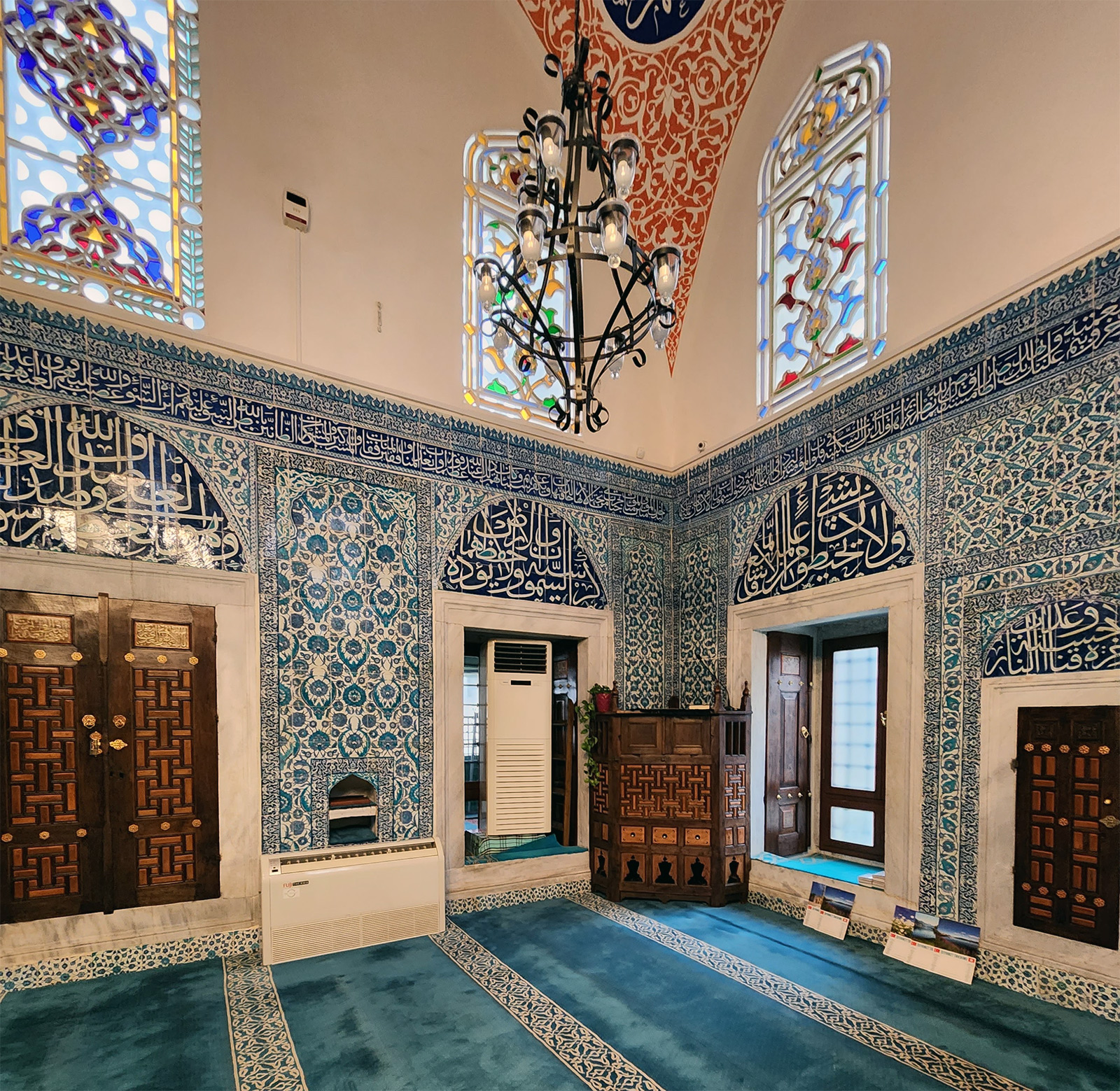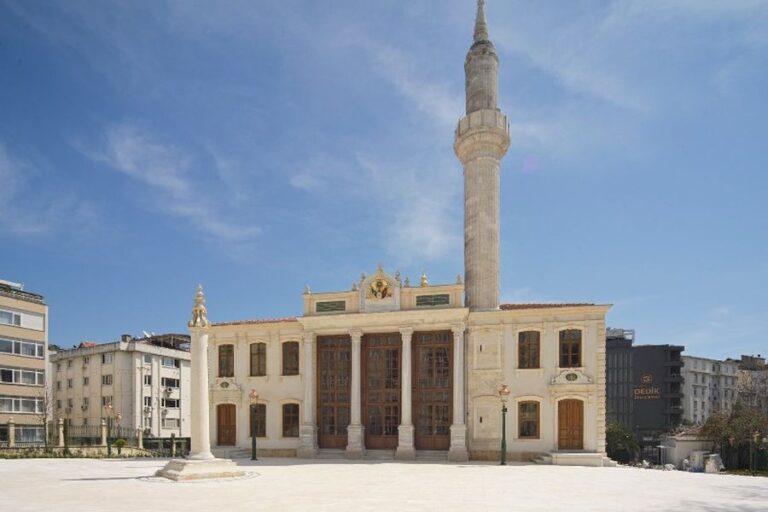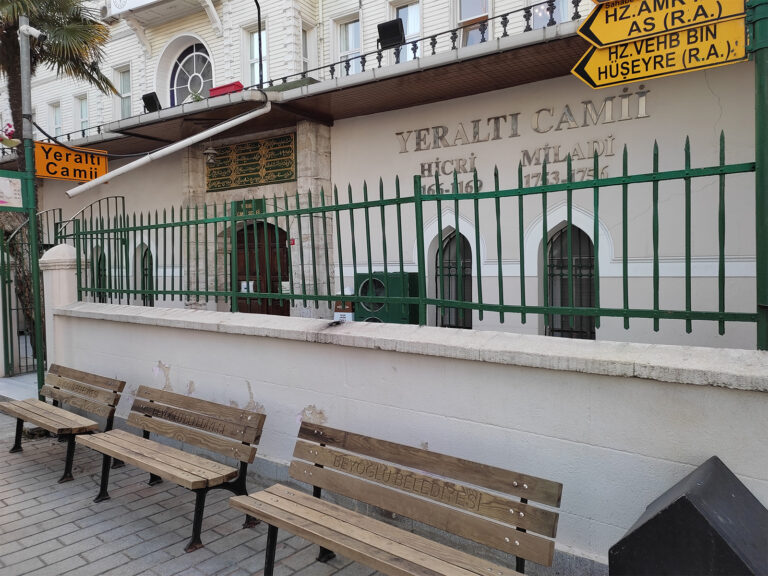Çinili Mosque (literally the Tiled Mosque)
The Çinili Mosque, also known as Orta Valide Mosque or Mahpeyker Kösem Valide Sultan Mosque, is a historic mosque from the Ottoman period, located in the Murat Reis neighborhood of Üsküdar district in Istanbul. The mosque was commissioned by Mahpeyker Kösem Valide Sultan, the wife of Sultan Ahmet I. Construction began in 1638 and was completed in 1640, reflecting Ottoman architectural influences.
Key Information about Çinili Mosque:
- History and Restoration:
- The mosque has undergone restoration in 1938 and 1965 due to deterioration over time.
- Complex Features:
- Originally built as a mosque, later additions include a madrasa (Islamic school), a şadırvan (ablution fountain), a sebil (public fountain), a mekteb (primary school), a fountain, and a bathhouse.
- The mosque is located in an area known as Murat Reis neighborhood, named after the mosque itself.
- Mahpeyker Kösem Valide Sultan, the benefactor of the mosque, is buried in the Sultan Ahmet I Mausoleum.
- Architectural Details:
- The mosque is square-planned with a single dome.
- It features a large open space for the last congregation surrounded by 20 marble columns with hexagonal cross-sections and pyramidal capitals, supporting a wooden roof.
- The north wall of the mosque is covered with partially damaged tiles.
- The mosque’s exterior is characterized by three windows with pointed arches on the upper part of each wall, and rectangular windows with iron grilles on the lower half.
- The interior of the mosque, including the walls up to the upper windows, is covered with tiles featuring naturalistic compositions of tulips and carnations, considered to be among the last examples of classical Turkish tile art.
- Additional Structures:
- The complex includes a madrasa, located in the southeastern corner of the courtyard, a small cemetery, and a rectangular pool.
- The şadırvan and sebil are designed together, with the şadırvan featuring a marble basin and a conical wooden roof supported by eight columns.
- The sıbyan mektebi (elementary school) is square-planned with a single dome, currently used as a children’s library.
- A fountain built in 1642 is located at the corner facing Çavuşdere Street.
- The double bathhouse (hamam) on Çinili Hamam Street follows traditional Ottoman bath architecture.
- Overall Significance:
- The Çinili Mosque Complex is an example of 17th-century Ottoman architecture, uniquely integrating its various components into the landscape, providing a dynamic urban presence.
The mosque’s distinctive feature, from which it gets its name (“Çinili” meaning “tiled” in Turkish), is the extensive use of tiles in its interior, offering a splendid example of Ottoman tile art.



